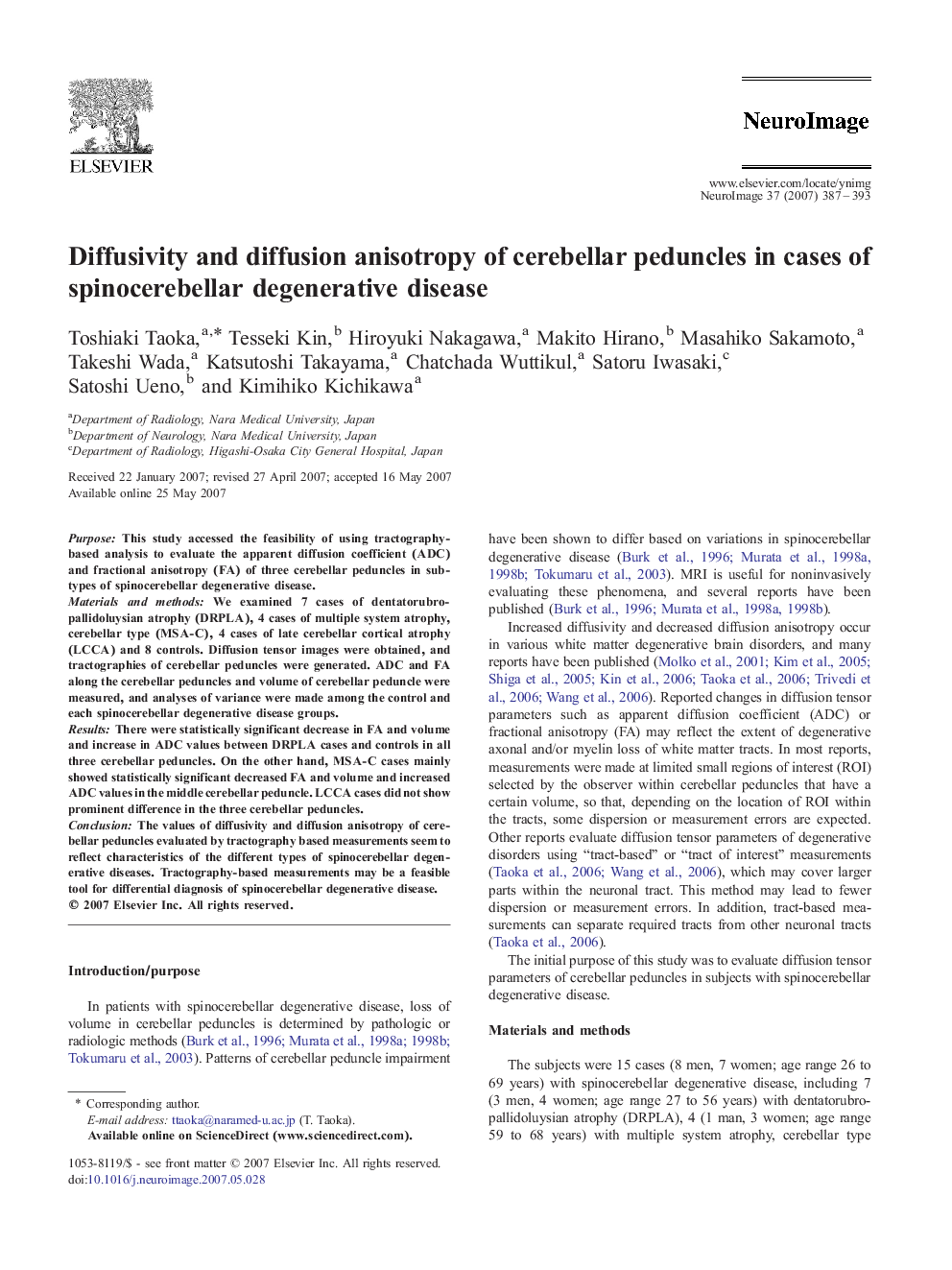| Article ID | Journal | Published Year | Pages | File Type |
|---|---|---|---|---|
| 3073177 | NeuroImage | 2007 | 7 Pages |
Purpose:This study accessed the feasibility of using tractography-based analysis to evaluate the apparent diffusion coefficient (ADC) and fractional anisotropy (FA) of three cerebellar peduncles in subtypes of spinocerebellar degenerative disease.Materials and methods:We examined 7 cases of dentatorubro-pallidoluysian atrophy (DRPLA), 4 cases of multiple system atrophy, cerebellar type (MSA-C), 4 cases of late cerebellar cortical atrophy (LCCA) and 8 controls. Diffusion tensor images were obtained, and tractographies of cerebellar peduncles were generated. ADC and FA along the cerebellar peduncles and volume of cerebellar peduncle were measured, and analyses of variance were made among the control and each spinocerebellar degenerative disease groups.Results:There were statistically significant decrease in FA and volume and increase in ADC values between DRPLA cases and controls in all three cerebellar peduncles. On the other hand, MSA-C cases mainly showed statistically significant decreased FA and volume and increased ADC values in the middle cerebellar peduncle. LCCA cases did not show prominent difference in the three cerebellar peduncles.Conclusion:The values of diffusivity and diffusion anisotropy of cerebellar peduncles evaluated by tractography based measurements seem to reflect characteristics of the different types of spinocerebellar degenerative diseases. Tractography-based measurements may be a feasible tool for differential diagnosis of spinocerebellar degenerative disease.
